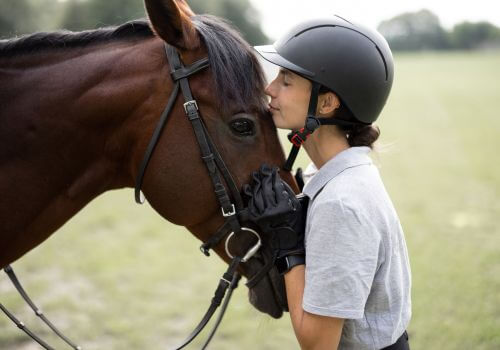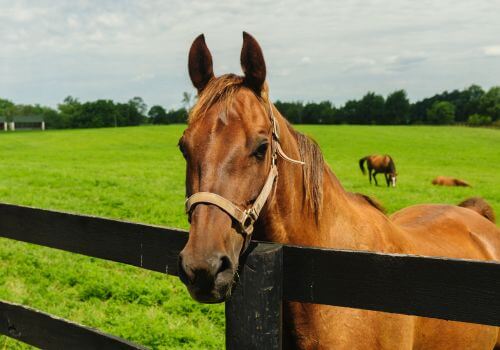Meet the Speed King: The Thoroughbred!
- Weight: 1,000 to 1,200 pounds
- Height: 15 hands (60 inches) to 17 hands (68 inches)
- Body Type: Deep chest; lean, athletic build; long neck; powerful hindquarters
- Best For: Owners and riders with some equine experience
- Life Expectancy: 25 to 35 years

Racing Through History: Where It All Began
Thoroughbreds originated in late 17th century Great Britain and developed through selective breeding aimed at speed and endurance. The breed's foundation stems from three main stallions: the Byerly Turk, the Darley Arabian, and the Godolphin Arabian, crossed with both native and imported mares. These horses are the ancestors of today’s Thoroughbreds and contributed some of the Thoroughbred traits that we know and love today.
The first Thoroughbred arrived in the American colonies in 1730, and by the 1800s, Kentucky and Tennessee had become major centers for Thoroughbred breeding and racing. The breed also influenced other horse breeds, including the American Quarter Horse, Standardbred, and Morgan. Today, the Jockey Club serves as the breed registry in the U.S. and Canada.
What Makes Thoroughbreds So Unique?
Thoroughbreds are known for their speed, agility, and stamina. They can reach speeds of up to 40 miles per hour and have powerful hindquarters that provide strong propulsion when galloping. Their refined, athletic build and energetic disposition make them ideal for racing and other equestrian sports.
How Big is a Thoroughbred Horse?
Thoroughbreds typically stand between 15 to 17 hands (60 to 68 inches) tall and weigh between 1,000 and 1,200 pounds. They have a deep chest, long legs, and a muscular yet lean build that contributes to their exceptional speed and endurance.
The Many Colors of a Thoroughbred Horse
Thoroughbreds come in a variety of solid coat colors, including bay, brown, chestnut, black, and gray. While white facial and leg markings such as blazes and stockings are common, patterned coat colors are not recognized in most breed registries.
Bred for Speed and More!
Though best known for their dominance in horse racing, Thoroughbreds excel in many other disciplines, including show jumping, dressage, eventing, and pleasure riding. Retired racehorses, known as Off-Track Thoroughbreds (OTTBs), often transition into new careers as sport horses or trail companions.

Diet and Nutrition of a Thoroughbred
Thoroughbreds require a nutrient-rich diet of high-quality grass, hay, grains, and occasional fruits and vegetables. Due to their fast metabolism, they often require more food than other horses their size to maintain a healthy weight. Vitamin and mineral supplementation may also be necessary in addition to their normal, well-balanced diet.
Common Health Issues of a Thoroughbred Horse
Thoroughbreds can be affected by a number of health issues throughout their lifetimes. A few of the most common health issues affecting the Thoroughbred breed include:
- Exercise-Induced Pulmonary Hemorrhage (EIPH): A condition causing bleeding in the lungs due to intense physical exertion.
- Large Heart Syndrome: Some Thoroughbreds have abnormally large hearts, which can lead to circulatory issues and heart failure.
- Thin Hooves: Many Thoroughbreds have light, thin-walled hooves that can cause soreness and lameness.
Improper breeding practices and inbreeding can make Thoroughbreds more prone to these health issues, as well as a number of others including, heart complications, lameness, and fertility issues, among others.
Grooming and Care of Your Thoroughbred
Thoroughbreds require regular grooming to keep their skin and coat healthy. Due to their thinner skin, they may be more sensitive to grooming than other breeds. Use soft-bristled brushes and gentle techniques to avoid irritation and keep their coat clean and shiny. Daily hoof cleaning is also essential to prevent infections and keep long-term hoof issues at bay.
Bringing It Back to the Barn
Thoroughbreds are legendary for their speed, agility, and competitive spirit. Whether on the racetrack, in the show ring, or as a trusted companion, these horses continue to be one of the most sought-after breeds in the world.
